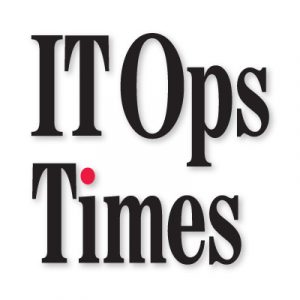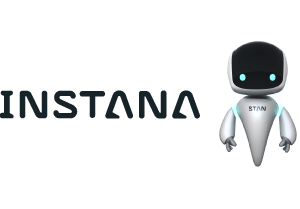Webinars
Why Automated AIOps Is Better Than AIOps- and How to Get There
RECORDED EVENT
Early monitoring efforts relied on specialists to scrutinize production environments for issues that might hurt performance. But as IT grew in size and complexity, humans struggled to keep up. Growing out of that struggle, AIOps enabled systems to independently spot anomalies and issue alerts. Adding automation takes AIOps to a whole new level—introducing enhanced options for remediating incidents, handling repetitive tasks, and removing human error.

White Papers
Log Management: A Guide for Buyers
Over the last several years, organizations have had to deal with exponentially more data than ever before. A good log management solution can help your organization connect the dots between your data, helping you uncover insights you didn’t even know you were looking for. Logs can help you understand what is going on within your organization, which can help you make better business decisions. This buyers guide looks at the challenges of managing logs and showcases some of the leading log management vendors in the industry.
Download your guide today!

White Papers
Pay the price to mitigate ransomware attacks

Webinars
Breakthroughs and Best Practices in Disaster Recovery
Wednesday, August 21,2019 at 1:00 pm E.T.
Disaster Recovery (DR) has never been more important. Natural disasters such as hurricanes, wildfires, and floods are on the rise. According to the U.S. National Oceanic and Atmospheric Administration the total cost of last year’s natural disasters was approximately $91 billion. FEMA has stated, “the need for forward-leaning action is greater than ever before.” Adding to the need for proactive DR, is the threat of ransomware attacks which are up 300% from 2018.
Join us for our upcoming webinar where you will learn about breakthroughs and best practices in disaster recovery, including how to:
- Immediate and on-demand failover to the cloud in case of disaster
- Eliminate virtual machine conversion and lengthy rehydration
- Leverage S3 for cost effective cloud storage
- Smoothly resume operations and transition back from a DR environment
Register for the webinar now!

White Papers
Monitoring your network with time-series data
Today’s applications are architectured to work on hybrid, componentized, containerized, distributed, mobile/sensor environments, and so do the networks that sustain all these applications together. Complexity, traffic volume, intolerance to performance degradation and inefficiency will only increase, demanding real-time and holistic monitoring.

White Papers
Container Security: More moving parts mean more complexity
Securing containerized applications is quite a bit more challenging than securing traditional monolithic applications. The use of open-source components in code, the microservices within containers, and the containers themselves, all need to be secure to ensure vulnerabilities do not make their way into the deployed application. This guide to container security looks at the issue from many sides through numerous articles, and also offers look at some of the providers of security software.

White Papers
Application Performance Management: A Guide for Buyers
Changes in software architecture and transition to the cloud have forced the way organizations monitor their applications to change as well. Because of increased complexity of applications — code written in-house, couple with services brought in via APIs, scaling in the cloud, much more data being processed — APM has become more important than ever. This buyers guide looks at the evolution of APM to meet today’s demands, and showcases some of the leading software providers in the APM space.

Webinars
ntop and InfluxData take the next step in monitoring containerized application environments with eBPF
Monitoring solutions often operate in silos, following the traditional IT organizational structure: infrastructure, network and applications teams. Further, such solutions sometimes operate without the necessary granular visibility into modern containerized environments. Although knowing what is occurring in each aspect of the IT environment is valuable, being able to correlate data from different layers and data sources is fundamental to meet today’s expectations on quality and avoid impacting results.
Monitoring must provide a good understanding of what is going on and what could be brewing undetected. In order to be well-equipped and pursue the goal of persistent satisfactory user experience, IT Operations should dig deeper into inter and intra-container traffic and identify where trouble starts, as well as correlate data from multiple sources for a complete view of the application environment.
In this webinar, Luca Deri, Founder of ntop, will share how they use InfluxDB to collect real-time network traffic monitoring metrics and events to support their ntopng platform. He will share how they made the switch from RRD to InfluxDB, what their data architecture looks like as well as share some challenges and successes using InfluxDB at ntop.

Webinars
Oracle to PostgreSQL Migration: Expectation vs. Reality
Date: Tuesday, June 25, 2019
PostgreSQL is catching up to Oracle as more and more enterprises migrate to the most popular open source database. But migration is a lengthy and challenging process, and our 2019 Oracle to PostgreSQL Migration survey showed that there are some surprises along the way; some good, some not so good.

Webinars
APM is Getting Personal!
Recorded Event: Most development teams are practicing some form of DevOps these days. Regardless of the extent of that practice, speed is the ultimate measure for success. Another earmark of a successful DevOps practice is the empowerment of smaller teams. Gone is the idea of consolidating complicated toolsets into the hands of a small Center of Excellence (CoE).

Webinars
Leveraging Containers for Improved Security
RECORED EVENT: As containers become commonplace for delivering and deploying applications, we’ve seen more of our customers taking a “lift-and-shift” approach to migrating their existing applications. In this session, Patrick Maddox, Sr. Director, Twistlock Solutions Architecture, will reveal how an environmental science and engineering consulting company moved its 14-year-old app that models storm surge to containers. The move to containers for this company — which has typical data collection, modeling, and other core line-of-business applications — delivered immediate benefits, including consistency, security and compliance.
Attendees will learn:
- How the move to containers simplified and improved the security of this application
- Specifics about how containers lowered expenses, while enabling greater visibility into the vulnerability posture of the app throughout its lifecycle
- Why containers make compliance instantly easier, by enabling organizations to find and correct problems early on, enforce settings and automatically block non-compliant actions

Webinars
Embedding security into your cloud-native pipeline
RECORDED EVENT: In today’s modern software factories, organizations are shifting security to the left. No longer just the purview of firewalls, security needs to be built in during development and deployment processes. By doing so, organizations can ensure they are limiting vulnerabilities getting into production while cutting costs of both downtime and code rework. Learn about:
- How to ensure that the use of open source doesn’t introduce vulnerabilities and other security risks
- How to automate delivery of trusted images using a policy-driven approach
- Empowering developers to secure their applications, while maintaining segregation of duties
- Ensuring the consistent flow of images through the pipeline, with no side-doors or introduction of unvetted images
- Enforcing immutability of containers, preventing container-image drift
Watch the webinar now!
FEATURED SPEAKERS:

Mostafa Siraj is a senior AppSec Engineer (Manager Level) at Capital One Bank based in London, United Kingdom. He has broad experience in preventing vulnerabilities in source code and architecture.

Rani Osnat has more than 20 years of enterprise software industry experience, in project management, product management and marketing, including a decade as VP of marketing for innovative tech startups in the IT security and cloud arenas. Previously Rani was a management consultant in the London office of Booz & Co. He holds an MBA from INSEAD in Fontainebleau, France.




